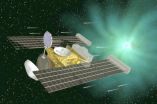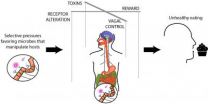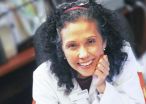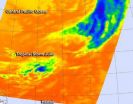(Press-News.org) We may joke about looking for a needle in a haystack, but that's nothing compared to searching for stardust in a foil! A new paper published in Science reveals that such work has led to the discovery of seven dust particles that are not only out of this world, they're out of this solar system.
The Stardust Interstellar Dust Collector was launched in 1999 in an effort to collect contemporary interstellar dust—dust that has travelled to our solar system from another. The Collector returned in 2006; since then scientists have been combing through blue aerogel and aluminum foil collectors looking for microscopic pieces of the dust.
As the Collector flew through space, tiny particles of both stardust and the Wild 2 comet flew into the particle catcher. Much like a bullet through an object, the dust leaves tiny tracks in the aerogel. The foils were left with tiny craters, again leading to possible stardust.
The consortium of nearly 70 scientists and a host of citizen scientists have identified seven tiny pieces, each about 200 nanometers to 2 micrometers, identified as interstellar dust. This is the first time contemporary stardust has been identified and studied here on Earth—prior to this, researchers were only able to study through astronomical observations. Philipp Heck, PhD, The Field Museum's Robert A. Pritzker Associate Curator of Meteoritics and Polar Studies explains "contemporary" stardust does not survive longer than a few hundred million years—studies on this stardust can help illuminate change over time, when compared to presolar grains that are older than 4.6 billion years. "For the first time we are examining recent extrasolar material in our labs, this is truly exciting!" said Heck.
Field Museum scientists Heck and Asna Ansari contributed to the study by scanning two foils from the Collector in the Museum's Scanning Electron Microscope (SEM) and then examining each of the thousands of images for small craters in the foil. The foils, each 1.4 to 4.2 cm long and only 0.2 cm wide, took two years to examine and evaluate. While the high resolution images revealed several crater candidates, further chemical analysis was required in order to determine the make-up of the particles. "Most craters turned out to be debris from the spacecraft itself, revealed by components of glass and paint," explained Heck. However, four of the 25 craters identified were determined to be interstellar craters.
Now that the seven samples found in both the foil and aerogel have been determined to be contemporary interstellar stardust, new methods are being developed to extract more information out of them. The consortium's study is outlined in more detail in an additional 12 papers, to be published next week in Meteoritics & Planetary Science.
INFORMATION:
Scientists discover interstellar stardust
Discovery gives insight to origin and evolution
2014-08-15
ELSE PRESS RELEASES FROM THIS DATE:
Credit allocation among researchers determined by new algorithm
2014-08-15
A new algorithm developed at Northeastern's Center for Complex Network Research helps sheds light on how to properly allocate credit.
The research was published this month in Proceedings of the National Academy of Sciences in a paper co-authored by Hua-Wei Shen, a visiting scholar at Northeastern and associate professor at the Institute of Computing Technology at the Chinese Academy of Sciences, and Albert-László Barabási, the Robert Gray Dodge Professor of Network Science and a Distinguished University Professor at Northeastern.
Using ...
New X-ray imaging developed by scientists
2014-08-15
Scientists have developed an x-ray imaging system that enables researchers to see 'live' how effective treatments are for cystic fibrosis.
Published in the American Journal of Respiratory and Critical Care Medicine, the imaging method allows researchers to monitor the effectiveness of a treatment for the life-threatening genetic disorder.
Cystic fibrosis affects many of the body's systems, but most severely the lungs, and currently it can take several months to measure how effective treatment is for the early-fatal lung disease.
Dr Kaye Morgan, lead researcher on ...
'Science' features PRB, WSU, DMC advances in preterm birth
2014-08-15
DETROIT – The Aug. 15 edition of the prestigious journal Science features a major article about the most important problem in obstetrics: preterm labor. The article, "Preterm labor: one syndrome, many causes," delivers a powerful message: preterm birth is not one condition, but many, and provides a framework for meeting this challenge.
"There are 15 million preterm babies born annually, and the condition affects 5 percent to 15 percent of all pregnancies, with the highest rates in North America and Africa. Prematurity is the leading cause of infant death up to age 1and ...
Charges for blood tests vary across California hospitals
2014-08-15
New UC San Francisco research shows significant price differences for ten common blood tests in California hospitals, with some patients charged as little as $10 for one test while others were charged $10,169 for the identical test.
The analysis of charges at more than 150 California hospitals looked at blood tests that are often required of patients, such as lipid panel, basic metabolic panel, and complete blood cell count with differential white cell count.
Hospital ownership and teaching status help explain a portion of the variation – prices generally were lower ...
Do gut bacteria rule our minds?
2014-08-15
It sounds like science fiction, but it seems that bacteria within us — which outnumber our own cells about 100-fold — may very well be affecting both our cravings and moods to get us to eat what they want, and often are driving us toward obesity.
In an article published this week in the journal BioEssays, researchers from UC San Francisco, Arizona State University and University of New Mexico concluded from a review of the recent scientific literature that microbes influence human eating behavior and dietary choices to favor consumption of the particular nutrients they ...
Stroke researchers link ability to self-administer medication with memory loss
2014-08-15
West Orange, NJ. August 15, 2014. Kessler stroke researchers and colleagues have identified an association between over-optimistic estimation of one's own ability to take medications accurately, and memory loss among stroke survivors. Results indicate that assessing patients for their ability to estimate medication skills accurately may predict memory disorder. The article, "Stroke survivors over-estimate their medication self-administration ability (MSA), predicting memory loss," was epublished ahead of print on May 28 by Brain Injury (doi:10.3109/02699052.2014.915984). ...
Visual exposure predicts infants' ability to follow another's gaze
2014-08-15
Following another person's gaze can reveal a wealth of information critical to social interactions and also to safety. Gaze following typically emerges in infancy, and new research looking at preterm infants suggests that it's visual experience, not maturational age, that underlies this critical ability.
The research is published in Psychological Science, a journal of the Association for Psychological Science.
"To the best of our knowledge, this is the first study showing that some aspects of the early development of social cognition is influenced by experience, even ...
NASA satellite spots a weakening Karina, now a tropical storm
2014-08-15
NASA's Terra satellite passed over Hurricane Karina before it weakened to a tropical storm early on August 15 and imagery showed the vertical wind shear was already taking its toll.
NASA's Terra satellite passed over Karina on August 14 at 2:40 p.m. EDT when it was still clinging to hurricane status and noticed that wind shear was already having an effect on the storm's structure. The Moderate Resolution Imaging Spectroradiometer or MODIS instrument captured an image that showed that the bulk of Karina's clouds were being pushed to the western side of the storm. That ...
NASA sees no punch left in Tropical Storm Julio
2014-08-15
Tropical Storm Julio doesn't have any strong thunderstorms or strong convection left in it according to infrared satellite imagery from NASA.
When NASA's Aqua satellite passed over Tropical Storm Julio on August 14 at 12:23 UTC (8:23 a.m. EDT), the Atmospheric Infrared Sounder known as AIRS analyzed the clouds and temperatures of the storm. The AIRS data showed that cloud tops had warmed and dropped lower in the atmosphere. That indicates that the strength behind rising air had weakened and was not forming strong, high thunderstorms with cold cloud tops.
There was a ...
Bigger government makes for more satisfied people, international Baylor study finds
2014-08-15
People living in countries with governments that spend more on social services report being more contented, according to a Baylor University study.
"The effect of state intervention into the economy equals or exceeds marriage or employment status — two traditional predictors of happiness — when it comes to satisfaction," said Patrick Flavin, Ph.D., assistant professor of political science in Baylor's College of Arts & Sciences.
The study — "Assessing the Impact of the Size and Scope of Government on Human Well-Being" — is published in the journal Social Forces. The researchers ...
LAST 30 PRESS RELEASES:
Numbers in our sights affect how we perceive space
SIMJ announces global collaborative book project in commemoration of its 75th anniversary
Air pollution exposure and birth weight
Obstructive sleep apnea risk and mental health conditions among older adults
How talking slows eye movements behind the wheel
The Ceramic Society of Japan’s Oxoate Ceramics Research Association launches new international book project
Heart-brain connection: international study reveals the role of the vagus nerve in keeping the heart young
Researchers identify Rb1 as a predictive biomarker for a new therapeutic strategy in some breast cancers
Survey reveals ethical gaps slowing AI adoption in pediatric surgery
Stimulant ADHD medications work differently than thought
AI overestimates how smart people are, according to HSE economists
HSE researchers create genome-wide map of quadruplexes
Scientists boost cell "powerhouses" to burn more calories
Automatic label checking: The missing step in making reliable medical AI
Low daily alcohol intake linked to 50% heightened mouth cancer risk in India
American Meteorological Society announces Rick Spinrad as 2026 President-Elect
Biomass-based carbon capture spotlighted in newly released global climate webinar recording
Illuminating invisible nano pollutants: advanced bioimaging tracks the full journey of emerging nanoscale contaminants in living systems
How does age affect recovery from spinal cord injury?
Novel AI tool offers prognosis for patients with head and neck cancer
Fathers’ microplastic exposure tied to their children’s metabolic problems
Research validates laboratory model for studying high-grade serous ovarian cancer
SIR 2026 delivers transformative breakthroughs in minimally invasive medicine to improve patient care
Stem Cell Reports most downloaded papers of 2025 highlight the breadth and impact of stem cell research
Oxford-led study estimates NHS spends around 3% of its primary and secondary care budget on the health impacts of heat and cold in England
A researcher’s long quest leads to a smart composite breakthrough
Urban wild bees act as “microbial sensors” of city health.
New study finds where you live affects recovery after a hip fracture
Forecasting the impact of fully automated vehicle adoption on US road traffic injuries
Alcohol-related hospitalizations from 2016 to 2022
[Press-News.org] Scientists discover interstellar stardustDiscovery gives insight to origin and evolution




